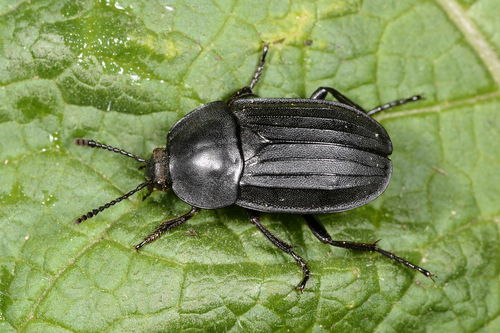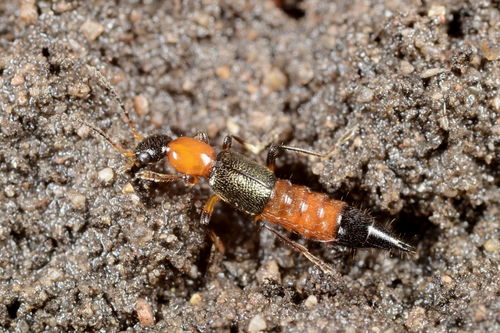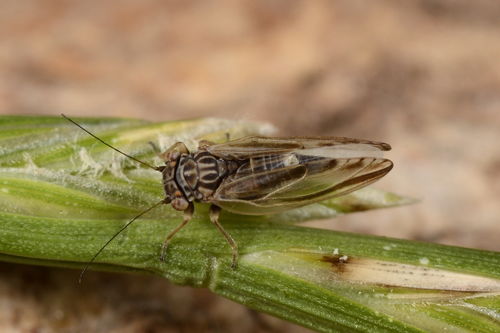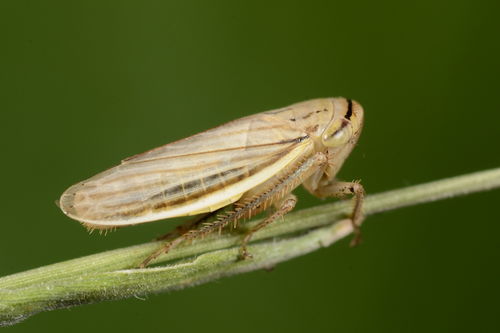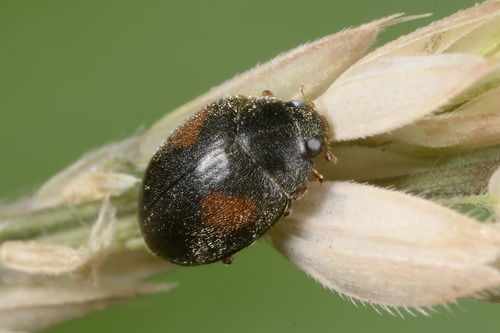Notes on some invertebrates found in Worcestershire in 2013
John Bingham and Denise Bingham
The cold dull spring of 2013 was a disappointing time for finding invertebrates and although the summer weather improved species seemed to remain elusive.
Silpha tristis, Illiger, 1798. Silphidae: Coeloptera. Local (01).
Found at Shrawley Wood on 7 May 2013 under tree canopy on woodland herbage. Silpha tristis is very similar to the more common Silpha atrata, however S. tristis is slightly larger and has more even puncturation on the pronutum and elytra. Although rare it appears to have been recorded quite a few times in Worcestershire. Alan Brown reported good numbers from Springfield Park, Kidderminster (Brown 2012). Rosemary Winnall reported one from Ismere, near Kidderminster and another from Longdon Wood, Wyre Forest,(Shropshire) both taken in May 2010 (Pers.comm.). Brett Westwood also reported a sighting near Kidderminster. (Pers. comm). It might be worthwhile collating all the records as this species may be locally common.
Paederus fuscipes, Curt,1840. Staphylinidae:Coleoptera National Scarce (02).
This colourful beetle was found on 16 July 2013 on bare mud at Wilden Marsh Nature Reserve, Kidderminster. Good numbers were seen scurrying over the wet mud and diving into the opening crevices. Thanks to Paul Whitehead for providing the identification, Paul's comment on the species was "although Nationally Scarce is relatively frequently encountered in the county's major river valleys and also at a number of 'artificial' wetlands across the region".
This Genus of beetle apparently can cause a dermatitis or skin irritation resulting from contact with the beetle. Information from Wikipedia was quite interesting although I have no idea how correct this is or if it applies to our Paederus beetles in the UK.
Quote: Once pederin is on the skin from the initial beetle contact, it may also be spread elsewhere on the skin. Washing the hands and skin with soap and water is strongly recommended if contact with a rove beetle has occurred. Initial skin contact with pederin shows no immediate result. Within 12–36 hours, however, a reddish rash appears, which develops into blisters. Irritation, including crusting and scaling, may last from two to three weeks'. (Wikipedia). It appear to be more problematic in places like Iran where the beetles are common in some locations and may be the cause or source of one of the Biblical plagues! So take care if you find any Paederus beetles.
Arytaina genistae, Latreille,1804. Family: Psyllidae Broom Psyllid (03).
Collected by Denise Bingham on 3 August on the recording day at Devil's Spittleful, Kidderminster. Beaten off broom Cytisus scopularia. According to British Bugs the dark streaks in the wing cells are a diagnostic feature. Length 3.5 mm. Found abundantly on broom and overwinters on conifers. Widespread and common in the UK. Our thanks to Dr Joe Botting for confirming the identification.
Athysanus argentarius, Metcalf, 1955 Family: Cicadellidae. Leafhopper (04).
This leafhopper was found by Denise Bingham on 3 August on the recording day at Devil's Spittleful, Kidderminster beaten off broom Cytisus scopularia. A large pale straw-coloured species, length 6.5-8 mm, with a dark line parallel to the front of the vertex, continuing across the eyes. There is a narrow longitudinal line along the scutellum and posterior half of the pronotum, with intermittent lateral lines parallel to that. (British Bugs).
According to the British Bugs web page this species was considered scarce and confined to coastal areas in the south-east but now become established inland across parts of central and southern England and can be found in a variety of grassland habitats. Our thanks to Dr Joe Botting for confirming the identification..
Scymnus frontalis, Fabricius , 1787. Coccinellidae:Coleoptera: Ladybird (05).
This ladybird was swept up from long grass by Denise Bingham on 3 August on the recording day at Devil's Spittleful, Kidderminster but not checked until after the meeting. Gary Farmer also independently found this species at the same meeting. So two records were obtained of this uncommon ladybird.
References and information
British Bugs. http://www.britishbugs.org.uk/
Auchenorrhyncha Recording Scheme. http://www.ledra.co.uk/index.html
Wikipedia information - http://en.wikipedia.org/wiki/Paederus_dermatitis
Brown, A. 2012 Coleoptera of note in the Kidderminster area, Winter 2011-2012. Worcestershire Record 33:13-19.
Images
01. Silpha tristis. John Bingham
02. Paederus fuscipes. John Bingham
03. Arytaina genistae. John Bingham
04. Athysanus argentarius. John Bingham
05. Scymnus frontalis. John Bingham.
